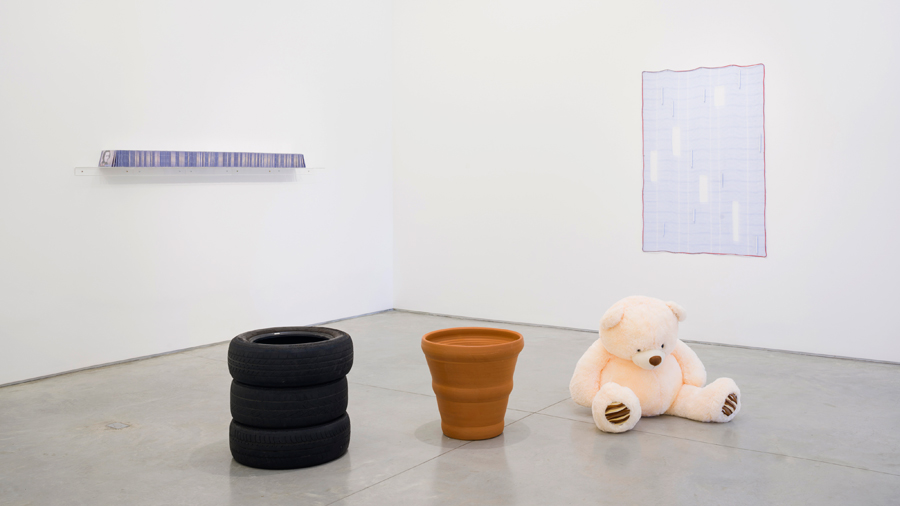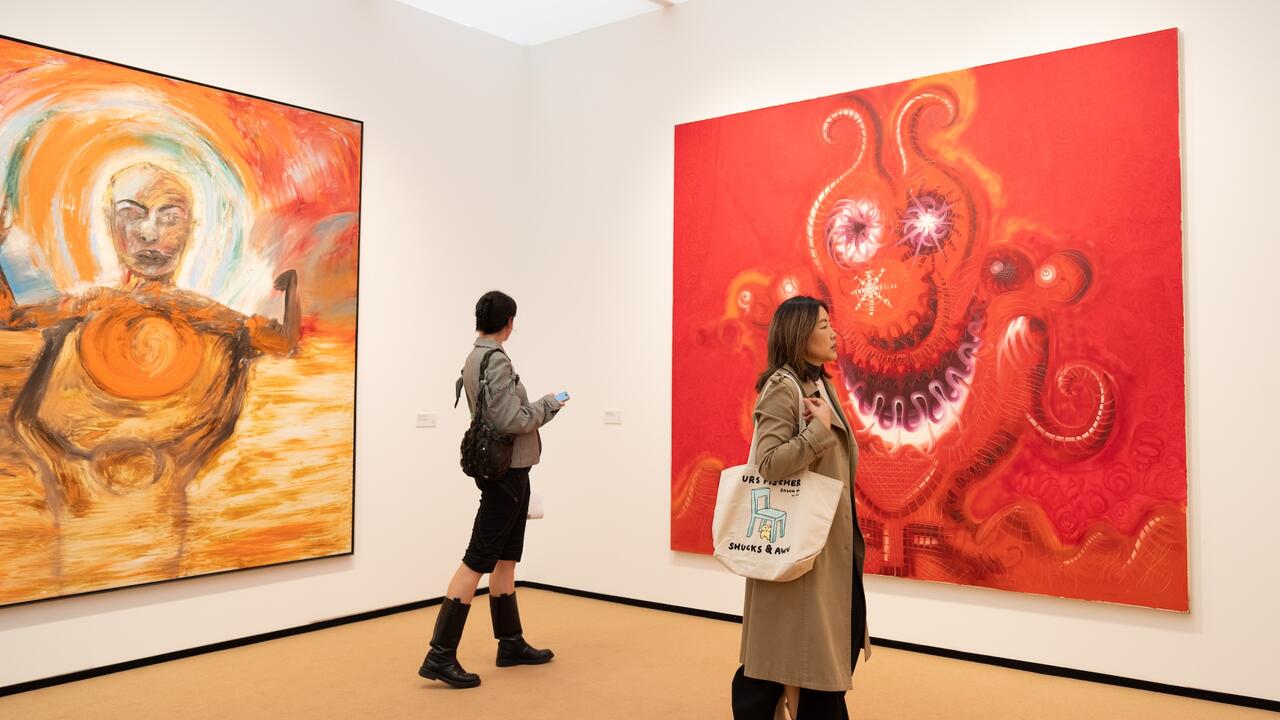A Song for Rio
Fortes D’Aloia & Gabriel, Rio de Janeiro, Brazil
Fortes D’Aloia & Gabriel, Rio de Janeiro, Brazil

The relationship between the eye and the ear – our senses of sight and hearing – has fascinated artists for millennia. The ancient Greeks, for instance, believed that the heavens spun around the Earth, producing a barely audible cosmic harmony, while the 19th-century poet Charles Baudelaire wrote of a correspondence between ‘perfumes, colours and sounds’. Wassily Kandinsky and Arnold Schoenberg, Piet Mondrian and the boogie-woogie, Jackson Pollock and jazz: much of modern art has been defined by synaesthetic relationships that have only intensified in the digital era.

‘A Song for Rio’ is the inaugural show of Carpintaria, the new Rio de Janeiro outpost of Fortes D’Aloia & Gabriel. Bringing together works by more than 25 international artists in two separate installations – the first in November 2016; the second in February 2017 – the exhibition is co-curated by Douglas Fogle and Hanneke Skerath. The decision to divide the show into two parts was driven not only by a desire to give the works sufficient space, but to offer an interlude – like an interval of rest between two piece of music – in a nod to the ‘A’ and ‘B’ sides of vinyl records.

Fogle and Skerath’s selection includes work by emerging artists Barbara Wagner and Vivian Caccuri, as well as by overlooked historical figures such as Paulo Garcez. Brazilian icons Jac Leirner, Ernesto Neto and Nuno Ramos are represented alongside important international artists whose work is rarely seen in Rio, such as Allora & Calzadilla and Cerith Wyn Evans. The curators’ groupings highlight the many ways contemporary artists explore the concrete or symbolic relationships between sound and form. Both exhibitions’ opening dates included outdoor screenings of films by Los Carpinteros and Bruce Conner, as well as performances by Caccuri and Arto Lindsay.
In Leirner’s Electric (After Elektra) (2016), 51 rulers of varying sizes and finishes span the length of a wall. Arranged in an ordered sequence, the rulers’ colours and lengths seem impregnated with rhythm, like a form of musical notation. The piece, specially commissioned for the exhibition, is typical of Leirner’s best work: incorporating found objects while formally referencing minimalism, pop art and Brazilian constructivism.

Bárbara Wagner and Benjamin de Burca’s video Estás Vendo Coisas (You Are Seeing Things, 2016) documents the production of music videos for hardcore bands in Recife, the largest city in northeastern Brazil. Through the artists’ lens, we see the way image-production is central to the music industry, and how the visuals it creates reproduce a capitalist economy of desire. De Burca and Wagner follow two main characters – Porck, a hairdresser by day and MC by night, and Dayana Paixão, a firefighter and singer – in the recording studio and on a nightclub stage. Estás Vendo Coisas casts the world of brega – an informal term used to define various forms of popular music produced in Brazil since the 1970s and associated by many with bad taste – in a sympathetic light, as a reflection of cultural progress caused partly by the volatile Brazilian economy.

The notion of taste is a common theme to many of the works. Dave Muller’s paintings of album covers offer portraits of his subjects by showing not their faces but their musical preferences: Marcia’s Top Ten (2016), for instance, depicts the gallerist Marcia Fortes’s 10 favourite albums. Elsewhere, Polish artist Agnieszka Kurant’s Ersatz Chopin (2013) considers the impact of globalization on musical tastes: a stack of counterfeit Chinese CDs of Frédéric Chopin’s music wryly references the fact that the popular composer is China’s only Polish import.
‘A Song for Rio’ is an insightful inquiry into the relationship between visual arts and music, sound and form, looking and listening, which feels apposite for a new gallery in a city with such a rich musical tradition.
Main image: Nuno Ramos, Vou Vivendo, 2017, soapstone, transverse flute, tenor sax, glass tube and cachaça, 230 x 155 x 70 cm. Courtesy: Fortes D’Aloia & Gabriel, Rio de Janeiro; photograph: Eduardo Ortega






















